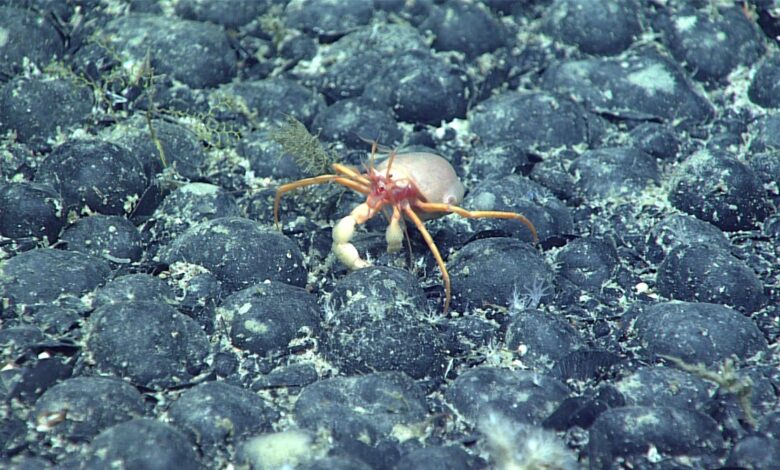Mystery of ‘Dark Oxygen’ Discovered at the Bottom of the Ocean

This story was originally Appear on WIRED ITALY and has been translated from Italian.
For more than 10 years, Andrew Sweetman and colleagues have been studying the ocean floor and its ecosystems, particularly in the Pacific Ocean’s Clarion-Clipperton Zone, an area dotted with polymetallic nodules. As big as potatoes, these rocks contain valuable metals—lithium, copper, cobalt, manganese, and nickel—used to make batteries. They’re Attractive rewards for deep sea mining companiesare developing technology to bring them to the surface.
The nodules may be a potential source of battery components, but Sweetman believes they may have produced something else entirely: oxygen. Normally, the element is created when organisms photosynthesize, but light doesn’t reach 4,000 meters below the ocean’s surface. Instead, as Sweetman and his team at the Scottish Association for Marine Science have discovered, proposed in a new paperThe nodules may promote this “dark” oxygen-generating reaction from seawater.
Sweetman first noticed something strange in 2013. He and his team were working to measure oxygen levels in confined areas of nodule-rich seafloor habitats. Oxygen levels seemed to increase at the seafloor, despite the fact that there were no photosynthetic organisms nearby, to the point where the researchers thought it was an instrumental anomaly.
However, the same finding was repeated in 2021, albeit using a different measurement method. Scientists assessed changes in oxygen levels inside a seafloor chamber, a tool that collects sediment and seawater to create closed samples of the seafloor environment. This tool allowed them to analyze, among other things, how oxygen was consumed by microorganisms in the sample environment. The oxygen trapped in the chamber should have decreased over time as organisms in the water and sediment consumed it, but it did the opposite: Despite the dark conditions that prevented any photosynthetic reactions, oxygen levels in the seafloor chamber increased.
This needed to be investigated. First, the team determined for certain that there were no microorganisms capable of producing oxygen. Once they were certain, the scientists hypothesized that polymetallic nodules trapped in the bottom chamber might be involved. After some lab testing, Sweetman says, they discovered that the nodules acted like a geological battery: They generated a small electric current (about 1 volt each) that split water molecules into their two components, hydrogen and oxygen, in a process called electrolysis.
However, how the nodules produce oxygen remains unclear: It is not known where the electricity is generated, whether the reaction is continuous, and, more importantly, whether the amount of oxygen produced is enough to sustain an ecosystem.
Then there’s the even bigger question: What if the electrolysis caused by polymetallic nodules was the spark that started life on Earth? That’s an interesting hypothesis that deserves further exploration, Sweetman says. It’s even possible that this could happen on other worlds and be a potential source of alien life.
These possibilities add weight to the argument that the deep seabed is a sensitive environment that needs to be protected from industrial exploitation. (A petition, signed by more than 800 marine scientists from 44 different countries, highlights the broader environmental risks of deep sea mining and calls for a moratorium on development.)
But with so many questions still unanswered, some are skeptical of the findings. The loudest criticism comes from within the world of deep-sea mining: Patrick Downes of Metals Company, a deep-sea mining company that operates in deep water—the same waters Sweetman studied and partly funded Sweetman’s research—say the result is the result of oxygen contamination from outside sources, and his company will soon release a paper refuting the argument put forward by Sweetman’s team.




